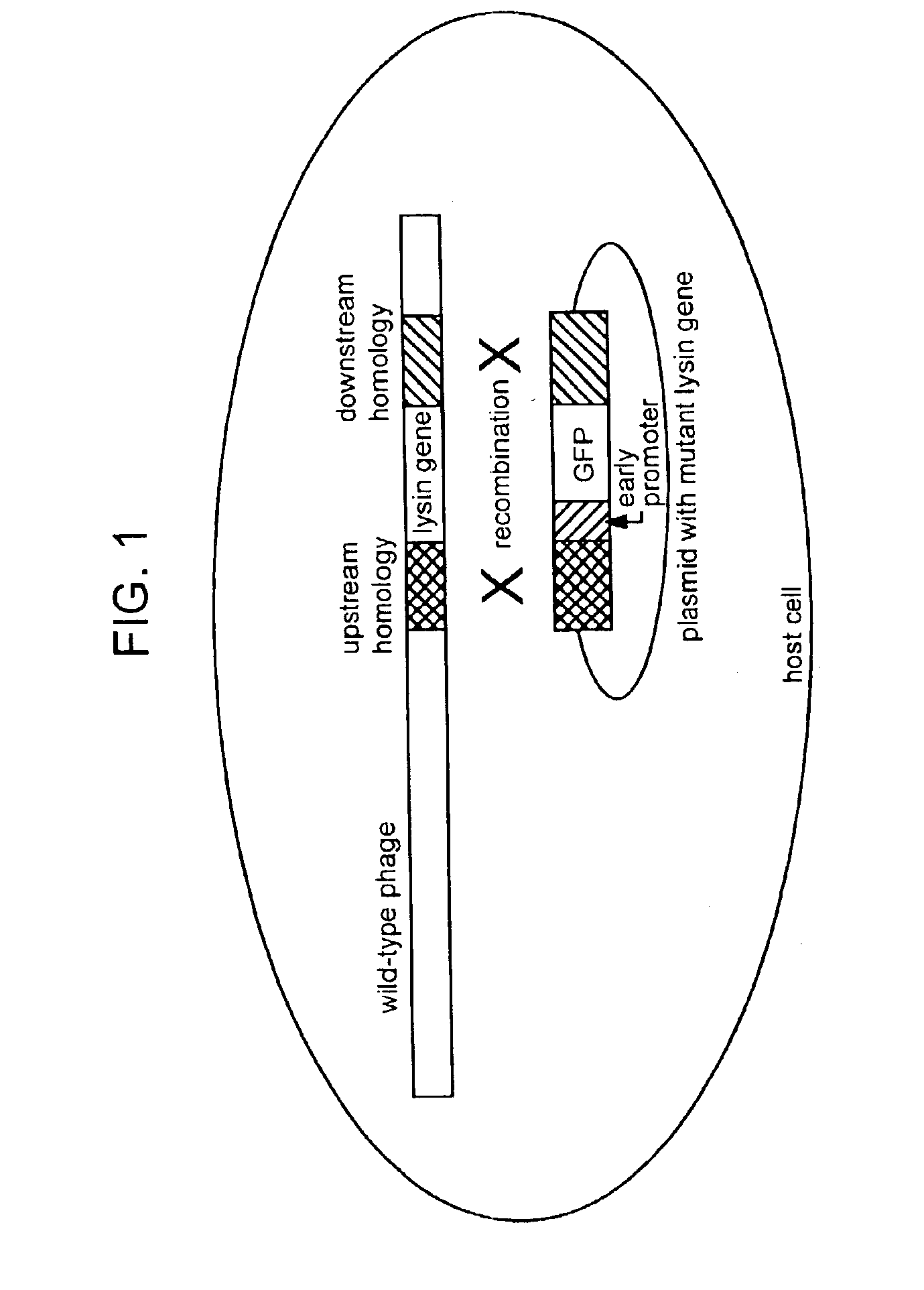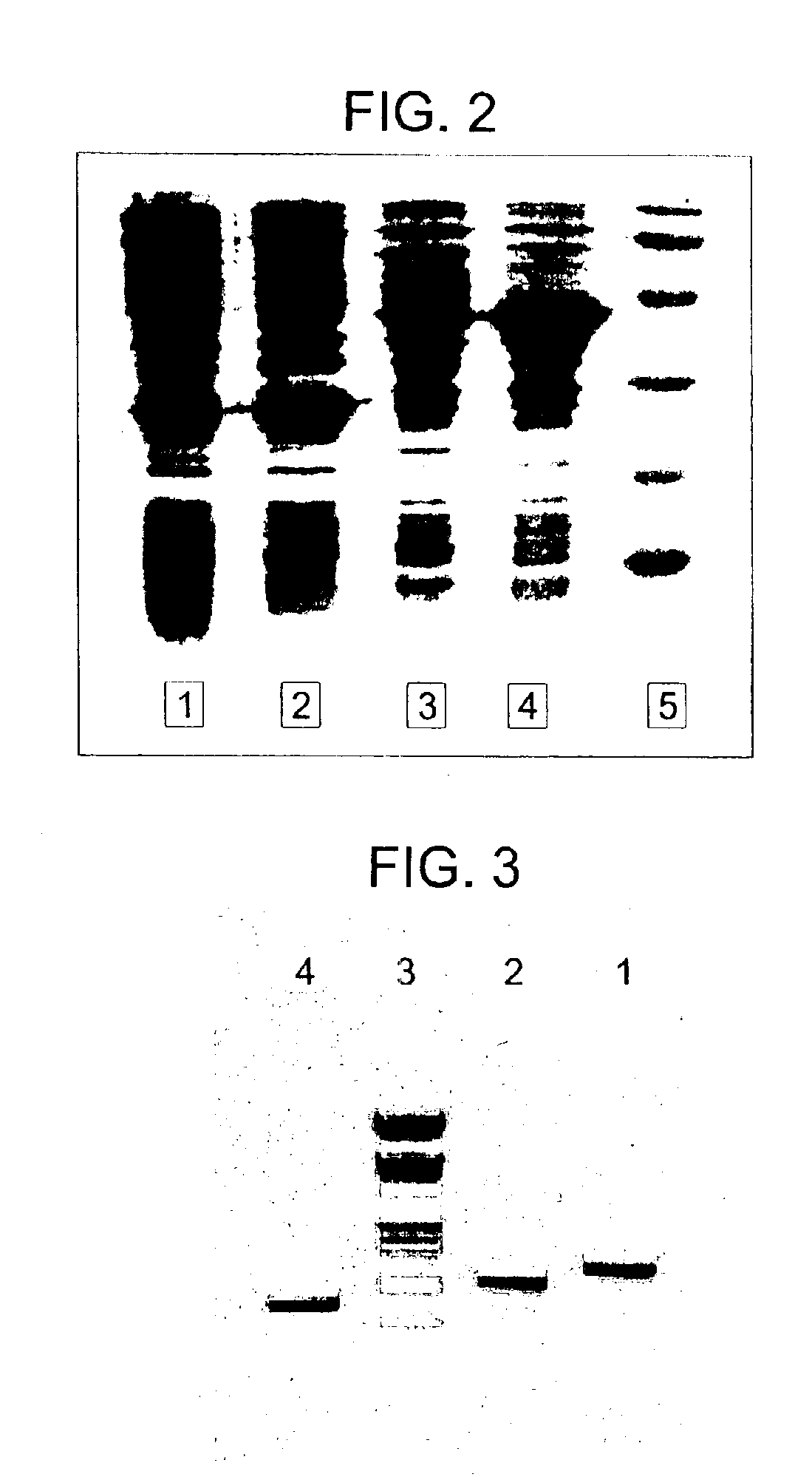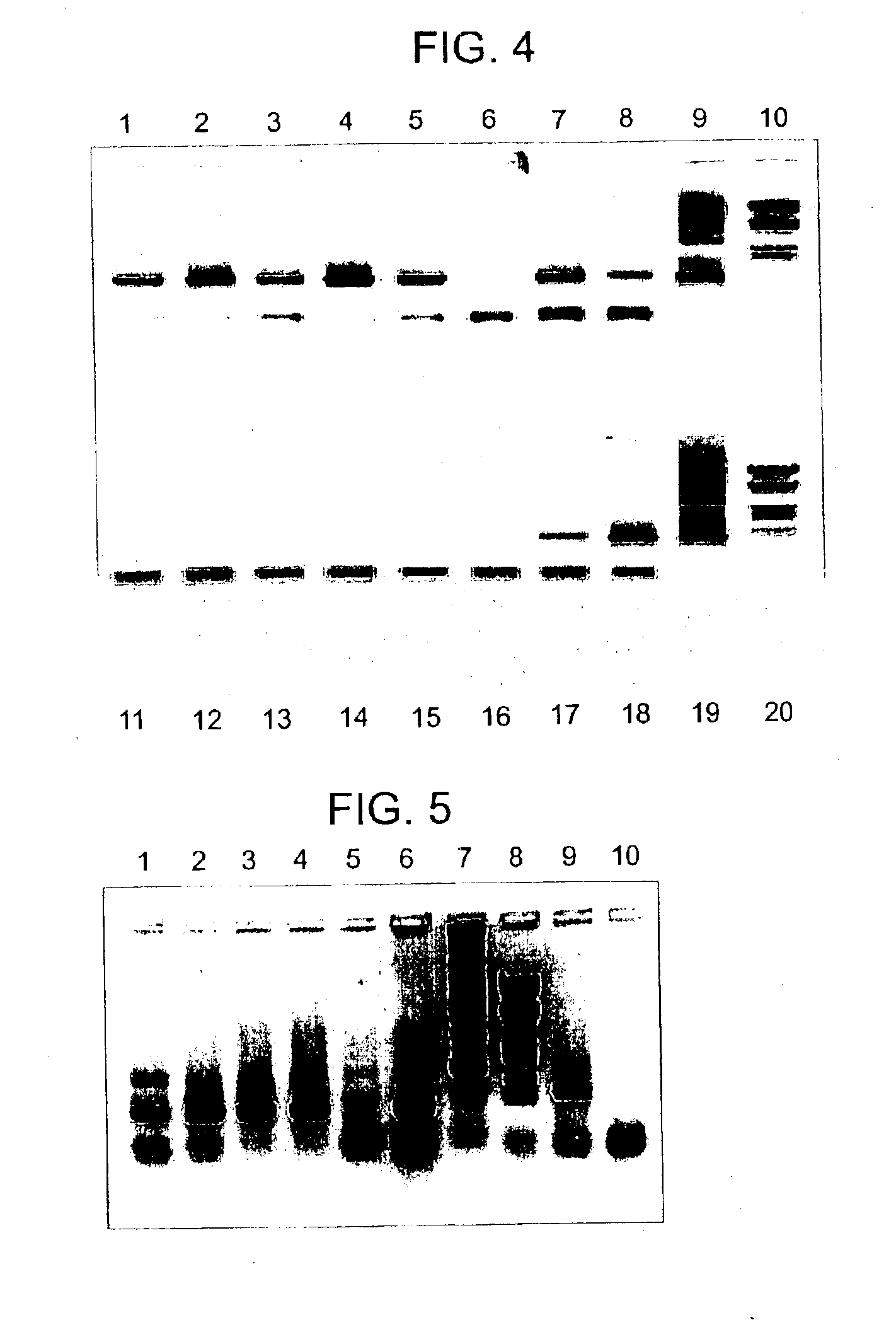Lysin-deficient bacteriophages having reduced immunogenicity
a technology of immunogenicity and lysin, applied in the field of bacteriaophages, can solve the problems that the lysin-minus bacteriophage is incapable of facilitating efficient lysis of the bacterial host, and achieve the effects of reducing the clearance of the bacteriophage, avoiding undesirable immune responses, and reducing the release of phages
- Summary
- Abstract
- Description
- Claims
- Application Information
AI Technical Summary
Benefits of technology
Problems solved by technology
Method used
Image
Examples
example 1
Creation of Lys Minus T4 Phage
[0172]The nucleotide sequence of the lysozyme (e) gene of bacteriophage T4 together with 130 additional nucleotides on each side was reported by Owen et al (J. Mol. Biol. 165, 229, 1983). The DNAs corresponding to 100 nucleotides of the upstream and downstream regions of the e gene are isolated by PCR and cloned into the ampicillin-resistant plasmid pUC 18 with unique restriction sites (Xba I and Pst I) between the two regions ((Sambrook, J. et al Molecular Cloning: A Laboratory Manual, 2nd ed. Cold Spring Harbor Laboratory Press, Cold Spring Harbor, N.Y.). A DNA cassette containing the gene for a mutant form of the green fluorescent protein (GFP) which fluoresces 40-fold more brightly than the wild type protein, is generated as an Xba I—Pst I fragment from plasmid pmut2 carrying gfp (Cormack, B. P., Valdivia, R. H. and Falkow, S. Gene 173, 33, 1996) and introduced between the upstream and downstream sequences of the lysozyme gene in pUC18(pGG8). The pr...
example 2
Production of Lys Minus T4 Phage in E. coli
[0174]The two-gene lysis system of the Pneumococcal phage Cp-1 has been cloned and expressed in E. coli (Martinet al. J. Bacteriol. 180, 210(1998). PCR using Cp-1 DNA as the template generates DNA fragments containing the cpl1 (lysin) gene or the cassette cph1-cpl1(holin-lysin) genes, in which the genes retain their own ribosome-binding sites. Using appropriate oligonucleotides, Sac II and Sac I restriction sites are created at the 5′ and 3′ ends of the PCR fragments for cloning into plasmid pNM185 (Mermod et al. J. Bacteriol. 167, 447(1986)). The cpl1 gene or the cassette containing cph1 and cpl1 genes are expressed under the control of a positively regulated promoter (Pm) of the meta pathway operon of the TOL plasmid. Transcription of the genes from Pm is specifically induced by the product of the xylS regulator gene only when effector molecules like 3-methyl benzoate are present. Transformation of E. coli HB101 cells with the pNM185 pla...
example 3
Creation of Plasmid pGMB021 for Use in Lys Minus Recombinant Phage Generation
[0175]Materials and Methods. Tag DNA polymerase, dNTP's, Calf Intestinal Phosphatase, Restriction enzymes, primers and T4 DNA ligase were procured from Bangalore Genei Pvt. Ltd (BGPL), Bangalore. pRSET vectors were from Invitrogen Ltd, USA.
[0176]The ligations were performed with vector:insert ratio of 1:10 M. The PCR products along with digested vectors were purified from agarose gel using Qiagen gel extraction kit reagents unless mentioned otherwise.
[0177]Construction of T4 lysozyme clone in T7promoter based pRSETB vector (pRSETB-T4L). PCR amplification of the lysin gene of T4 was performed with the wild type T4 phage obtained from BGPL, using the following primers:
[0178]
GMB1: Forward 5′ CG GAA TTC CAT ATG AAT ATA TTT GAA ATG TTA CGT 3′(SEQ ID NO:1)GMB2: Reverse 5′ AA AGC GGC CGC AAG CTT TAG ATT TTT ATA CGC GTC CCA 3′(SEQ ID NO:2)
[0179]Initial denaturation was at 95° C. for 4 min, followed by 30 cycles of ...
PUM
| Property | Measurement | Unit |
|---|---|---|
| concentration | aaaaa | aaaaa |
| temperature | aaaaa | aaaaa |
| temperature | aaaaa | aaaaa |
Abstract
Description
Claims
Application Information
 Login to View More
Login to View More - R&D
- Intellectual Property
- Life Sciences
- Materials
- Tech Scout
- Unparalleled Data Quality
- Higher Quality Content
- 60% Fewer Hallucinations
Browse by: Latest US Patents, China's latest patents, Technical Efficacy Thesaurus, Application Domain, Technology Topic, Popular Technical Reports.
© 2025 PatSnap. All rights reserved.Legal|Privacy policy|Modern Slavery Act Transparency Statement|Sitemap|About US| Contact US: help@patsnap.com



